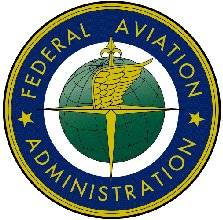Political Pressure, Media Hype Results In Changes To Hudson
River Airspace
 The FAA has confirmed that it is planning to modify the
airspace over the Hudson River by revising procedures to 'create
safe, dedicated operating corridors' for all the aircraft that fly
at lower altitudes around Manhattan.
The FAA has confirmed that it is planning to modify the
airspace over the Hudson River by revising procedures to 'create
safe, dedicated operating corridors' for all the aircraft that fly
at lower altitudes around Manhattan.
“The New York Airspace Task Force chartered on August 14
developed a comprehensive series of recommendations that we plan to
implement as quickly as possible,” said FAA Administrator
Randy Babbitt. “These steps will significantly enhance safety
in this busy area and create crystal-clear rules for all of the
pilots who operate there.”
The safety enhancements would restructure the airspace, mandate
pilot operating rules, create a new entry point into the Hudson
River airspace from Teterboro, standardize New York area charts and
develop new training for pilots, air traffic controllers and
businesses that operate helicopters and aircraft in the area. One
of the most significant changes, if adopted, would divide the
airspace into altitude corridors that separate aircraft flying over
the river from those operating to and from local heliports or
seaplane bases.
Specifically, this new exclusionary zone would be comprised of
three components:
- It would establish a uniform “floor” for the Class
B airspace over the Hudson River at 1,300 feet, which would also
serve as the “ceiling” for the exclusionary zone.
- Between 1,300-2,000 feet, it would require aircraft to operate
in the Class B airspace under visual flight rules but under
positive air traffic control, and to communicate on the appropriate
air traffic frequency.
- Between 1,000-1,300 feet, it would require aircraft using VFR
to use a common radio frequency for the Hudson River. Aircraft
operating below 1,000 feet would use the same radio
frequency.
New pilot operating practices would require pilots to use specific
radio frequencies for the Hudson River and the East River, would
set speeds at 140 knots or less, and would require pilots to turn
on anti-collision devices, position or navigation equipment and
landing lights. They would also require pilots to announce when
they enter the area and to report their aircraft description,
location, direction and altitude.
Existing common practices that take pilots along the west shore
of the river when they are southbound and along the east shore when
they are northbound would become mandatory. In addition, pilots
would be required to have charts available and to be familiar with
the airspace rules.
The FAA also intends to propose standardized procedures for
fixed-wing aircraft leaving Teterboro to enter the Class B airspace
over the Hudson River or the exclusionary zone. If an aircraft
plans to enter the Class B airspace, Teterboro controllers would
request approval from Newark before the aircraft takes off and be
authorized to climb the aircraft to 1,500 feet. Aircraft that want
to enter the VFR exclusionary zone would be directed by a special
route over the George Washington Bridge.

The FAA expects to complete and publish any changes in time to
have them in effect by November 19, so that they can be
incorporated on new, standardized aeronautical charts that will
replace existing charts. The charts will highlight the Class B VFR
corridor, encouraging more pilots to exercise the option to fly
over the Hudson River under air traffic control, instead of
entering the congested exclusionary zone.
Finally, the FAA intends to develop training programs
specifically tailored for pilots, air traffic controllers and
fixed-base operators to increase awareness of the options available
in the Hudson River airspace, and better develop plans that enhance
safety for the intended flight.
“We have reinforced how important it is to follow the
recommended procedures and maintain professional conduct until we
put the new mandatory measures in place,’’ said
Administrator Babbitt. “These new safety steps incorporate
the collective experience of pilots who fly in that airspace as
well as our own air traffic controllers and the National Air
Traffic Controllers Association. We all want the skies over New
York to be as safe as they can be.”

The FAA chartered the New York Airspace Task Force on August 14
and proposed actions based on the group's August 28 report. The
National Transportation Safety Board (NTSB) issued independent
recommendations on August 27 that were not used in the development
of the task force's safety enhancements. The FAA's proposed actions
meet or exceed the NTSB's recommendations.
 ANN's Daily Aero-Linx (04.16.24)
ANN's Daily Aero-Linx (04.16.24) Aero-News: Quote of the Day (04.16.24)
Aero-News: Quote of the Day (04.16.24) Airborne 04.10.24: SnF24!, A50 Heritage Reveal, HeliCycle!, Montaer MC-01
Airborne 04.10.24: SnF24!, A50 Heritage Reveal, HeliCycle!, Montaer MC-01 Airborne 04.12.24: SnF24!, G100UL Is Here, Holy Micro, Plane Tags
Airborne 04.12.24: SnF24!, G100UL Is Here, Holy Micro, Plane Tags Airborne-Flight Training 04.17.24: Feds Need Controllers, Spirit Delay, Redbird
Airborne-Flight Training 04.17.24: Feds Need Controllers, Spirit Delay, Redbird





